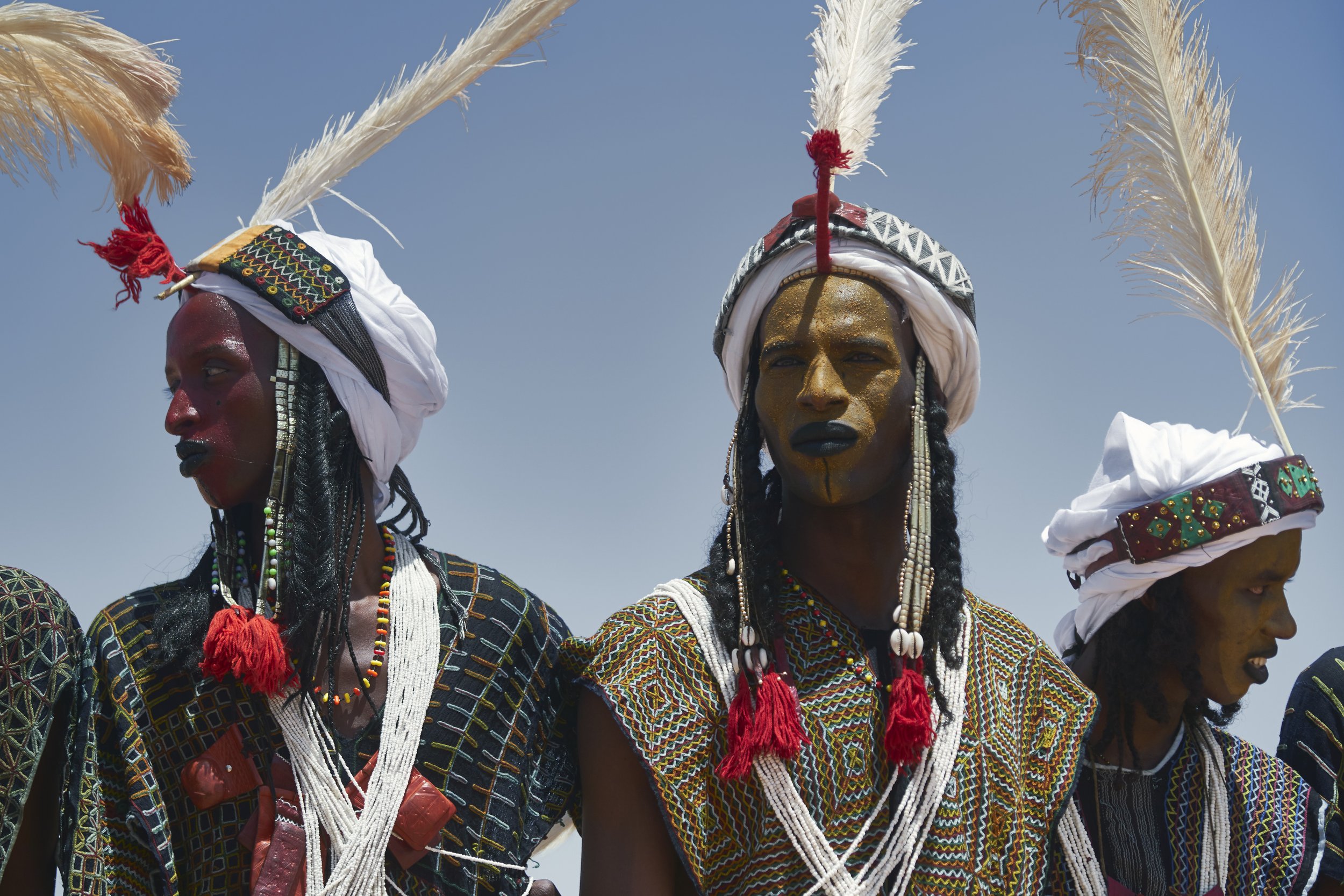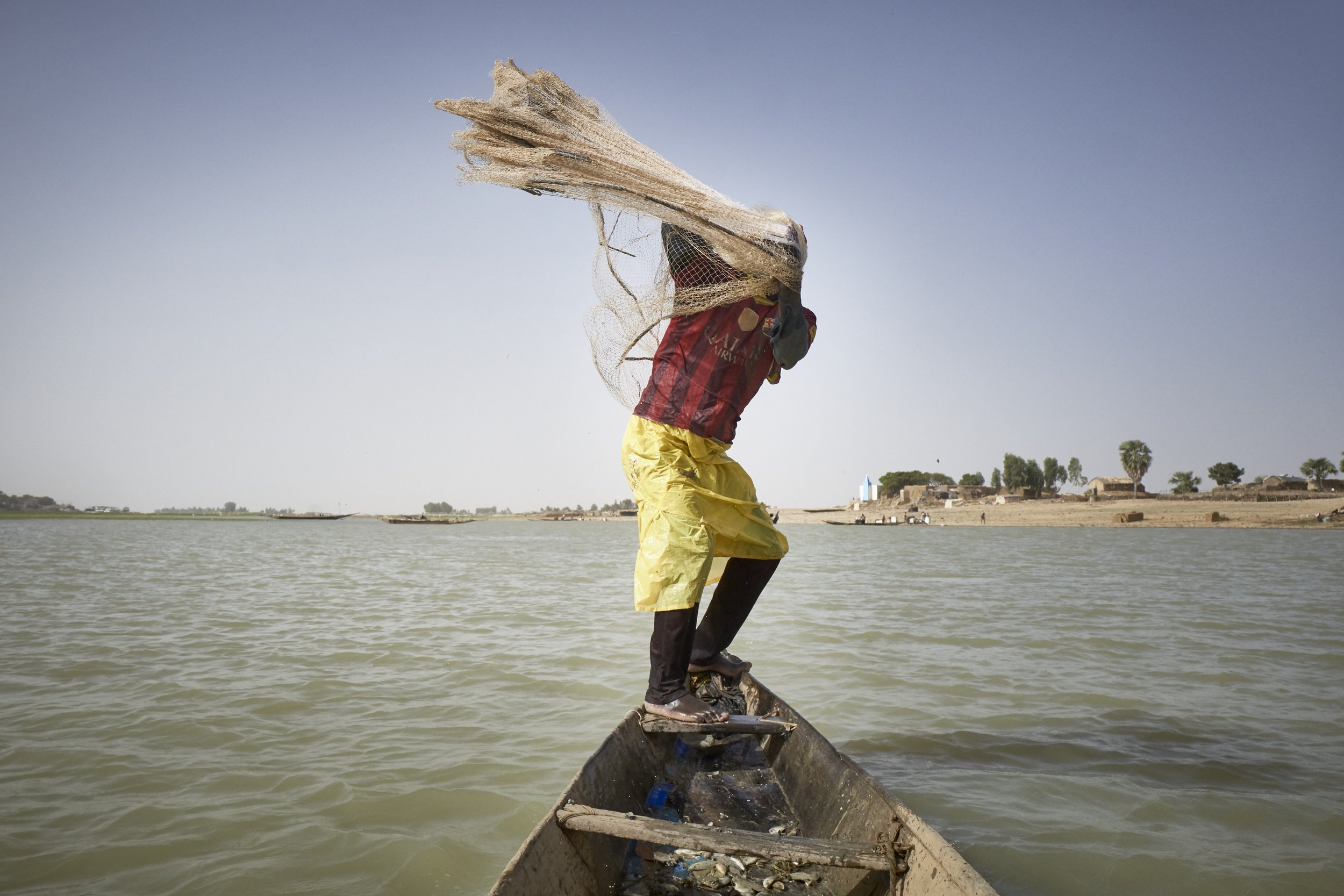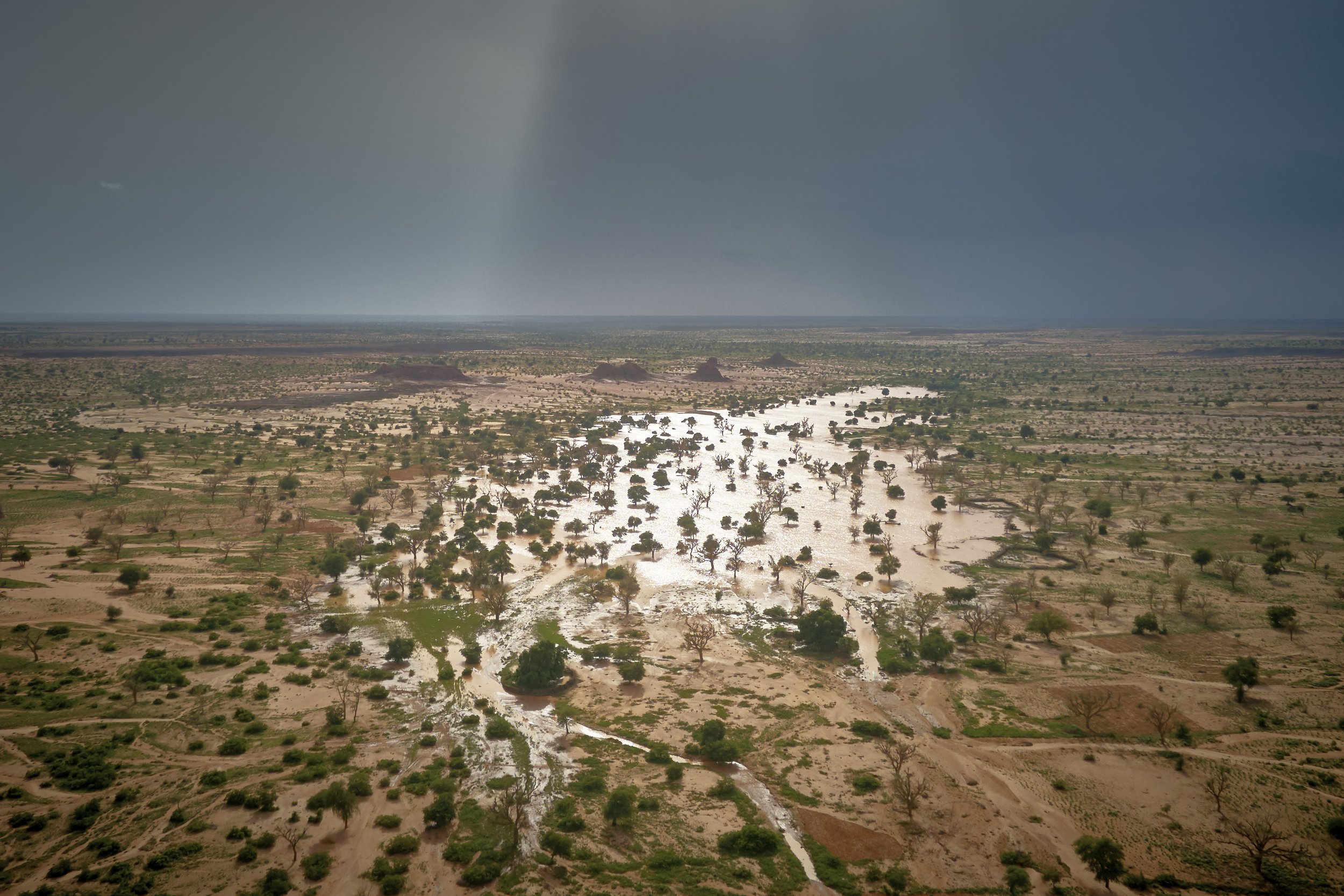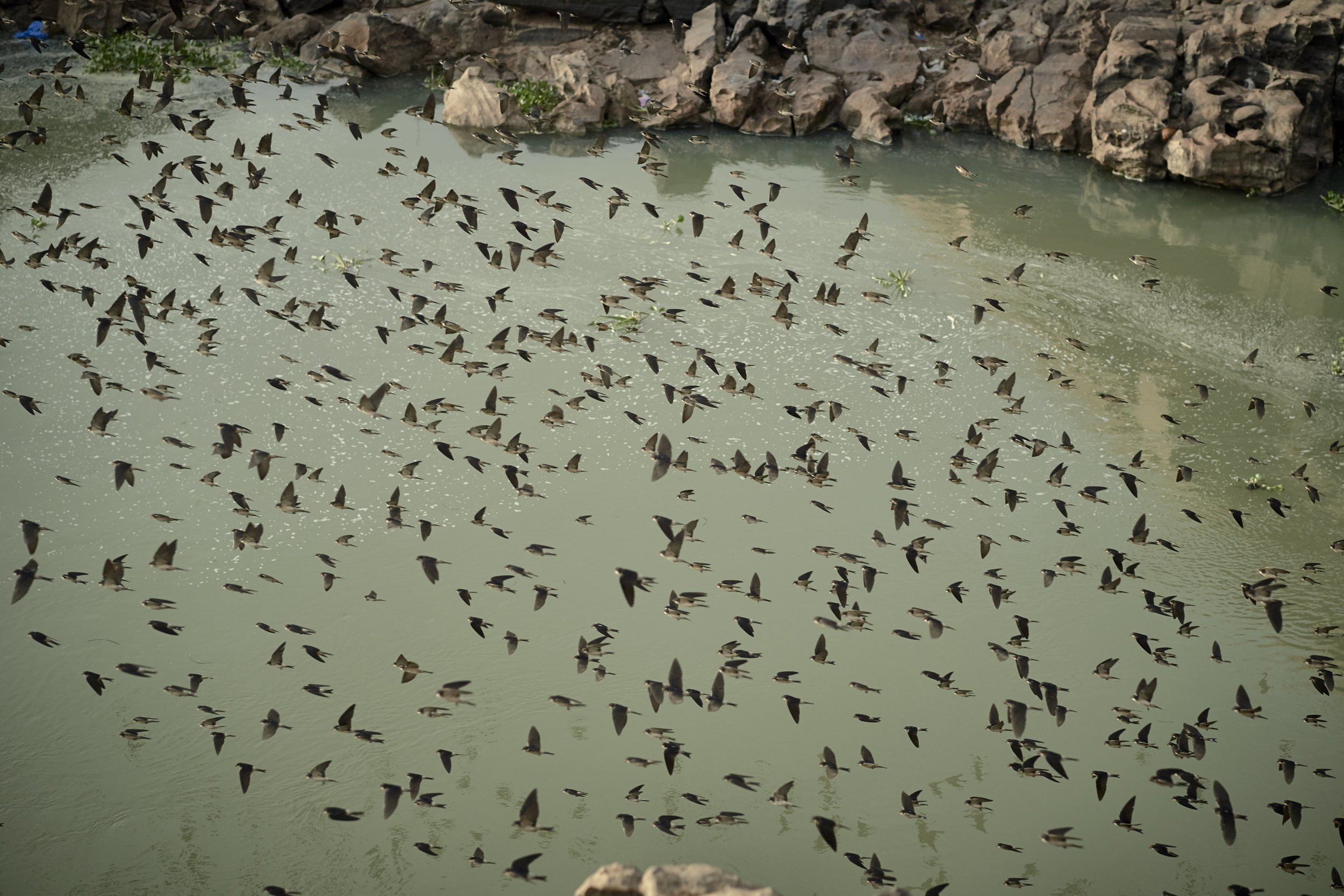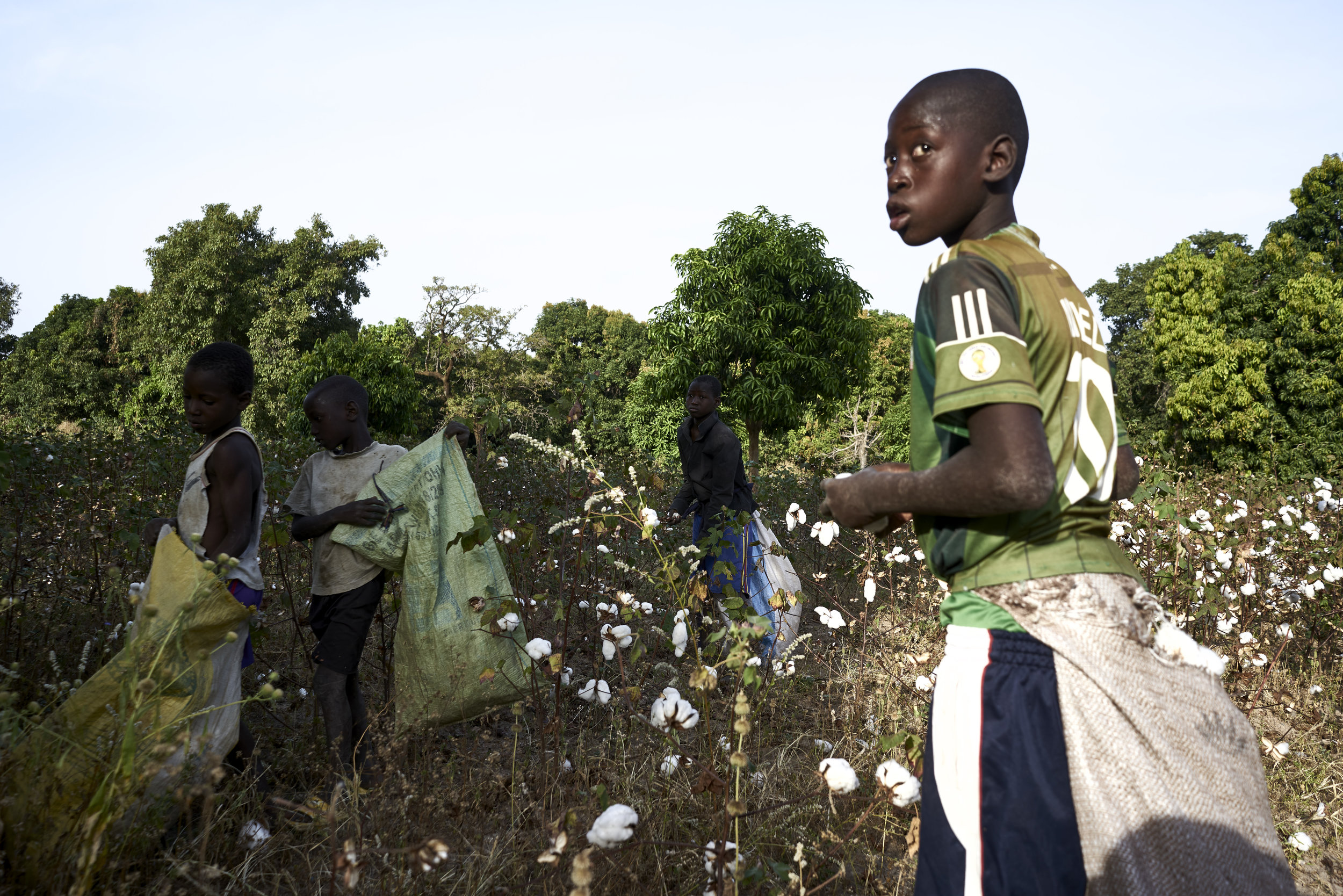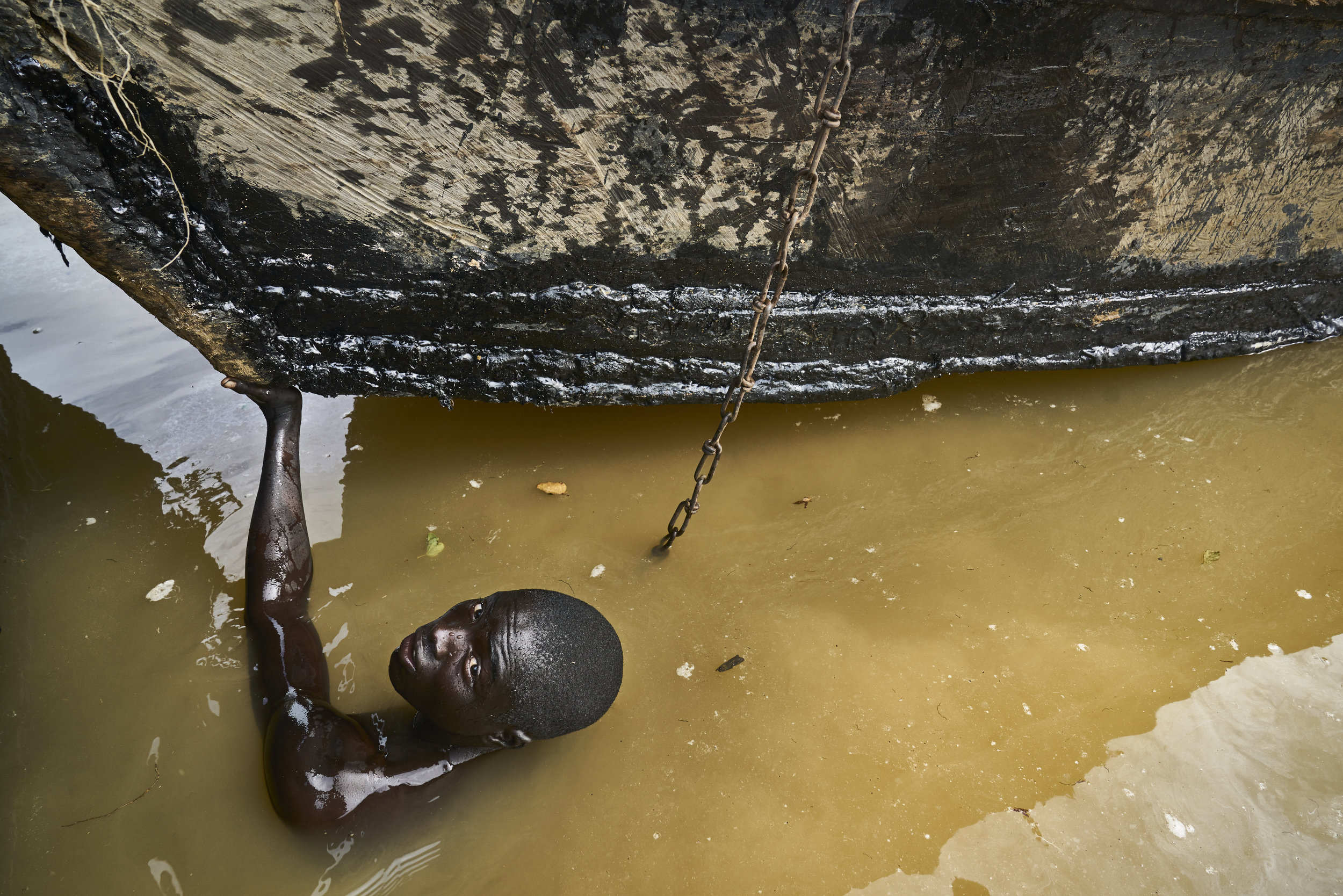Follow is a journey from West Africa towards the dream of “the West”, between reality and fiction, illusions and disillusions, dreams and nightmares. In the last years, two major migration routes from West Africa have gained ground: one crosses the Atlantic Ocean toward Spain’s Canary Islands; the other takes migrants by plane to Central America with the United States as the final destination. Both carry the same mixture of Western aspirations, which often turn into unspeakable disillusions and a daily struggle for dignity. Follow traces these two routes and explores how social networks have become showcases for their fantasies. TikTok, Snapchat, and Facebook are window and mirror: places where dreams are consumed and produced. Stories and selfies give life to visions of a richer, more beautiful life elsewhere; they feed the algorithms that push these images towards other young people back home, who are still caught in a dream factory . “Follow” isn’t just a social media term; it’s a reference to a social phenomenon. If most of my friends have left, I might start considering it too.This project proposes a shift of perspective: rather than framing migration as “escape,” it questions the pursuit of a dream as a driving force of movement.
© Michele Cattani - Text: Amaury Hauchard - Video: Anne-Fleur Lespiaut — https://www.heidi.news/explorations/les-migrants-tiktok
The Banc d’Arguin National Park, a UNESCO World Heritage Site since 1976, stretches across 12,000 km² where the Sahara meets the Atlantic. Famous for its biodiversity, the park provides vital refuge for migratory birds and marine life. For centuries, the Imraguen community has lived along its shores, relying on small-scale fishing. Their wooden sailing boats, still built by hand using techniques inherited from the nearby Canary Islands, remain a symbol of this maritime heritage. But rising pressures from industrial fleets, climate change and youth migration threaten their way of life. Fisheries remain a cornerstone of Mauritania’s economy. According to FAO, in 2018 national fleets landed nearly 968,000 tons of fish, while foreign vessels under licensing agreements caught over 430,000 tons. Yet most of this output is exported, and domestic consumption remains among the lowest in West Africa. Climate projections from the World Bank warn of a 2.3°C temperature rise by 2030 and significant sea-level increases, posing risks to coastal settlements and ecosystems. At the same time, artisanal and industrial fishing have led to steep declines in some species, undermining both biodiversity and local livelihoods. Adding to these challenges, gold mining east of the park uses mercury in ore processing, raising health and environmental concerns, with pollutants carried by desert winds. The Banc d’Arguin stands as one of West Africa’s ecological jewels. But sustaining both its fragile environment and the culture of its coastal communities may prove increasingly difficult.
© Michele Cattani
Fortune, glory and nuggets: the Sahara desert has become a Far West where thousands of young Africans are rushing tempting their fate and aiming a life-changing breakthrough. A new gold rush, from Sudan to Mauritania, is deeply upsetting the already precarious balance of a region beset by many challenges: military coups, lack of governments, war, trafficking and jihadism. In this context, in addition to industrial exploitation, artisanal mining centres are multiplying year by year, creating an unprecedented migratory flow of young people who, captivated by the precious metal, have experienced how it could bring a disproportionate wealth in a such a short time.Apart from the sound of the wind, the only audible sound is the one of the generators and jackhammers used along the gold seam to dig tunnels up to 200 metres deep. Real geometries drawn in the expanses of sand, where cases of exploitation, fatal accidents, disputes, theft, and armed attacks are not uncommon. Few kilometres far from the mining centres, the stones are crushed, sieved and filtered with mercury and cyanide to extract the gold dust, implying a drastic pollution of the groundwater, the sand and all the surrounding areas, where the mercury can be carried by the wind.
© Michele Cattani - Text: Amaury Hauchard
https://lesjours.fr/obsessions/or-sahara/
Since 2015, central Mali has been caught up in an outbreak of violence that spreads day by day. The rise of a jihadist preacher Amadou Koufa, who hails from the nomadic Fulani herding community, also known as the Peul, has inflamed centuries-old tensions between herders and farmers. Koufa has largely recruited among his own people, and the wider Fulani community became tarred because of their attacks. Other ethnic groups, notably the traditional Dogon hunters and the Bambara, formed so- called self-defence forces. One of these groups, a pro-Dogon militia called Dan Nan Ambassagou, has been accused by NGOs and the UN of carrying out massacres in Fulani villages, an allegation it denies. The Malian army has also been accused by NGOs of occasionally collaborating with the Dan Nan Ambassagou against the Jihadists. Nearly 200.000 people have fled violence in central Mali. The stories collected in this series aim to go beyond the polarisation of a conflict and to represent the complex dynamics of tensions that are often summarily stigmatised with an ethnic label. All the people portrayed have, voluntarily or not, experienced the horror chapter of the region, finding themselves caught up in a conflict that has changed their lives, forcing them to flee and living in anonymity. Everyone represents a different facet of the conflict.
© AFP Photo/Michele Cattani - Text: Amaury Hauchard
In the south-east of Mauritania, along the border with neighbouring Mali, a cliff called Dahr acts as a geographical barrier in a desert area. Here a few narrow roads allow the passage of the cliff, becoming crucial crossroads to be monitored in order to limit the spread of jihadist extremism, which is strongly present on the other side of the border. A unit called Mehariste, part of the National guard, acts to control the movements along the border. With their camels, one of the most resilient animal in those environments, they are able to reach isolated communities that would otherwise be inaccessible. Thanks to their proximity to local populations they represent an important source of intelligence, contributing to provide informations on an “invisible” border of this desert zone. Meharists play a key role by responding to the basic needs such as the construction of wells, important crossing points in the desert, and providing free primary health care consulting.
© Michele Cattani - Text: Paul Lorgerie
For most of the time, the tiny oasis town of Ingall has a population of just a few hundred. But once a year north Niger’s traditional gateway to the Sahara, known for its salt flats, is the gathering point for the Cure Salee festival of Tuareg and Wodaabe pastoralists. For three days, the semi-arid patch edging the Sahara desert blooms with a riot of colours – red, orange, blue – as thousands of nomadic herders don their best dress for a festival celebrating their culture. The festival marks the end of the rainy season, when herders bring their animals to graze from up to 400 kilometres away, converging on three springs of water rich in mineral salts that give the gathering its name: Cure Salee (Salt Cure). Here they meet old friends, exchange news and reinforce cultural ties and traditions. The camels race is a highlight of the three-day nomad festival. Dozens of pick-ups are strategically parked to give spectators standing on their roofs the best view. Others have brought their camels, around two metres at the shoulder, to gain a little height. The camels soon arrive and are placed behind a green rope stretched across the starting line. The jockeys are young for the lighter they are, the faster the beasts will go.
Text: Amaury Hauchard - Photos: Michele Cattani
Ecological issues are threatening livelihoods in central Mali, even as inhabitants have to contend with jihadists and armed groups. A vast area roughly the size of Switzerland, the inner Niger delta is a complex ecosystem comprising lakes and floodplains, which support hundreds and thousands of fishermen, farmers and herders.
"When the grass is there, it's for the pastoralists; when the water is there, for the Bozos; when the land is there, for the farmers,"
Overfishing has depleted stocks, and the Sahara desert is also encroaching on the green floodplains.
© AFP Photo/Michele Cattani - Text: Amaury Hauchard
Situated in the heart of the Sahel region, Niger is one of the countries most affected by the climate crisis. Temperatures in the Sahel are increasing 1.5 times faster than anywhere else in the world, and the number of floods almost doubled between 2015 and 2020. These effects exacerbate the situation in a country where almost 4 million people need urgent humanitarian assistance.
“When the River Breaks” is a series that tells the stories of people affected by floods in Niger. It describes the uniqueness of each person’s situation and challenges, but also their strength and potential, and their universal aspiration for security, love and solidarity.
A narrative built between imaginary and real, alternating photos and representations drawn on the emergency tents to give back life its own daily dimension.
Realised and edited with Charlotte Cans for UNOCHA
©UNOCHA/Michele Cattani
At the age of 43, Aboubacar Traore is trying once again to kickstart his life after three failed attempts at migration. Poor and adrift, the stonemason and former imam is back in his native Mali. In his latest migration attempt in 2017, Traore had been working in Algeria. But police caught him in a sweep in late 2019 and dumped him on the Niger border. He remained in the capital Niamey for several months before the UN's International Organisation for Migration (IOM) returned him to Bamako. The agency placed him in a centre filled with other failed migrants. Most were young men in their early twenties and keen to try their chances again, desperate to escape the clutches of poverty in the Sahel. Traore, too, knew that misery lay in wait for him if he returned home. But, for him, there would be no further attempt at Eldorado, he judges himself to old to try again. The expectation of seeing his loved ones again is blurred by the feeling of failure and the need to explain why he returned. “Three years is not three days” repeats Aboubacar while he travels back to his village. "Once you come back, you feel guilty, you're still the one who used to send the money and who doesn't send it any more," says Amadou Coulibaly of the Association of Expelled Malians.
©AFP Photo/Michele Cattani - Text: Amaury Hauchard, Michele Cattani
Close to the holy spot of Soutadounou, on the Niger River, the leader Sufi Adama Yalcouye founded one of the most famous Sufi community in Bamako, that he led until his death in 2016.
His adherents are required to behave in a morally upright manner and in the respect and tollerance of all religions. In this sense, many symbols from other faiths and traditions, like the Christian cross, the animist symbol of Kanaga and the Malian flag are commonly used by this community.
According to the tradition, during the battle of Khaybar some jinns (spirits) helped the Prophet Mohamed. One of them decided to come to Mali and he settled here in Soutadounou. It was Sama-Roussi who no longer lives, but his children Alhariou Kariou Khahilou, still lives in Soutadounou.
©AFP Photo/Michele Cattani
It was the heart of the forest and there, in a marsh, lay a carpet of water lilies, their delicacy unveiled in the dawn light. But the beauty belied the danger, the Tofa Gala forest, on Mali's lawless border with Burkina Faso, was a haven for ruthless jihadists. Guns in hand, French troops advanced on one side of the marsh, and their counterparts from Burkina Faso on the other. Their goal: assert control over an area where no troops had set foot for over a year. Named Bourgou IV, the mission was the first official joint ground operation between the French army and the so-called G5 Sahel force, which pools troops from Burkina Faso, Chad, Mali, Mauritania and Niger. In an exercise earlier this month, some 1,400 soldiers, 600 of them French, were deployed in the volatile region.Cat and mouse - A French officer explained the rationale behind the search missions. A Burkinabe officer said the French security measures and loud convoys offer the jihadists time to escape. "It's normal that the French never find anything when they arrive," he saids."
© AFP Photo/Michele Cattani - Text: Amaury Hauchard
It only took a few hours on April 28, 2020 for the thousands of tents of the displaced to vanish in a cloud of ashes. Waste had been burned, as is the norm in the overflowing dumps of West Africa, but the wind carried the flames toward the tents of the inhabitants of the Faladié dump, in the south of Bamako, Mali’s capital. Those who had found shelter here were displaced people from the center of the country, who had fled violence and war. They are mostly Peuls, a nomadic ethnic group of herders who cross the vast Sahelian expanses with their livestock, searching for green areas during the arid dry season, and for pastures not flooded in the rainy season. Caught in the whirlwind of intercommunal violence in the region, compounded by an unprecedented expansion starting in 2015 of a jihadist group led by a Peul, the entire ethnic group was accused of being complicit with or members of the jihadists. The Malian military and their auxiliaries refused to avoid such conflations, and every dark-skinned person who spoke Fulfulde became suspect. In total, there are now 290,000 people in Mali who have fled their homes and found refuge in the outskirts of cities. That is four times more than two years ago, and the arrival of new displaced people never stops. In Faladié, it is a daily occurrence. But at this dump, the tents burned on April 28. Those who already had nothing could not even shed tears.
© AFP Photo/Michele Cattani - Text: Amaury Hauchard
Cotton growing is one of the Mali's main source of wealth. The sector as a whole supports four million people, or a quarter of the population. After Burkina Faso declined the production a cause of genetically modified crops, Mali became the first Africa’s cotton producer with a crop that in 2018/2019 has reached a record-production of 750,000 tonnes. Despite the large production the country will only transform a tiny part of it into yarn or clothing. The construction of a real textile industry that the authorities have wanted for decades has never been achieved. As a state monopoly, the vast majority of the cotton crop is processed in the Chinese-Malian owned Comatex factory of Segou. The rest is still spun and woven according to traditional techniques in the villages.
© AFP Photo / Michele Cattani
A building boom in Mali's capital Bamako, has boosted the demand for bricks made from high-quality sand dug manually from the bed of the Niger River. Diggers can travel more than 100 kilometres (60 miles) from Bamako to reach an extraction site, sometimes exposed to harsh weather conditions that endanger their fragile crafts. Once there, sand collectors dive down to the river bed to fill up buckets. The job carries many dangers, from the treacherous currents of the river to powerful storms. A boat can carry up to 10 tonnes of sand, which is sold for around 50,000 CFA (around $80). Women unload the sand after the boats return to Bamako they earn less than $2 per shipment. The industry is illegal and the number of extraction sites is decreasing due to the intense exploitation, which has an important effect on the river's depth and its ecosystem.
.
© AFP Photo / Michele Cattani
Interactive and immersive media artwork about migrants and the sea. Apnea explores the dimension of the emotions of migrants who venture out to cross the sea. Apnea proposes an inner itinerary that we can all recognise: a cartography of feelings and fears mapped using interactive immersive technologies and an exhibition of objects that were salvaged from the sea.
Apnea ’s audio-visual contents were realized in Lampedusa.
Concept: Vanessa V - Artwork Design: Stefano Sburlati e Vanessa Vozzo - Photos Michele Cattani
more info about the project and the next exhibition:
http://www.officinesintetiche.it/?portfolio=apnea





